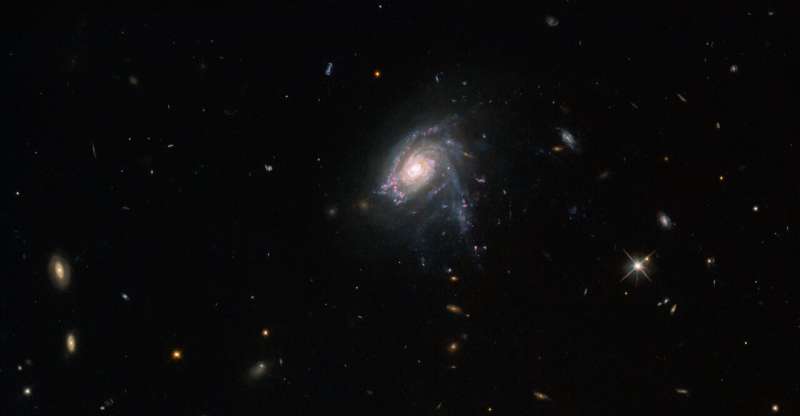This article has been reviewed according to Science X's editorial process and policies. Editors have highlighted the following attributes while ensuring the content's credibility:
fact-checked
trusted source
proofread
Hubble views the jellyfish galaxy JO175

The jellyfish galaxy JO175 appears to hang suspended in this image from the NASA/ESA Hubble Space Telescope. This galaxy lies over 650 million light-years from Earth in the appropriately named constellation Telescopium and was captured in crystal-clear detail by Hubble's Wide Field Camera 3. A handful of more distant galaxies are lurking throughout the scene, and a bright four-pointed star lies to the lower right side.
Jellyfish galaxies get their unusual name from the tendrils of star-forming gas and dust that trail behind them, just like the tentacles of a jellyfish. These bright tendrils contain clumps of star formation and give jellyfish galaxies a particularly striking appearance. Unlike their ocean-dwelling namesakes, jellyfish galaxies make their homes in galaxy clusters, and the pressure of the tenuous superheated plasma that permeates these galaxy clusters is what draws out the jellyfish galaxies' distinctive tendrils.
Hubble recently completed a deep dive into jellyfish clusters, specifically the star-forming clumps of gas and dust that stud their tendrils. By studying the origins and fate of the stars in these clumps, astronomers hoped to better understand the processes underpinning star formation elsewhere in the universe. Interestingly, their research suggests that star formation in the disks of galaxies is similar to star formation in the extreme conditions found in the tendrils of jellyfish galaxies.
Provided by NASA's Goddard Space Flight Center





















